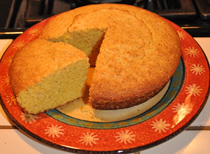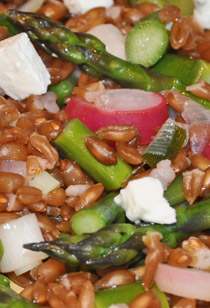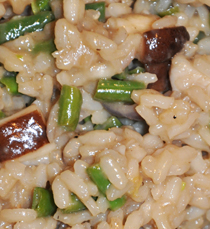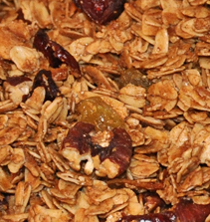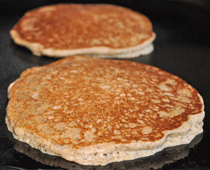Grains, especially whole grains, are the basis for a lot of Better Cheaper Slower cooking and eating. Here are some things I like to have in the kitchen year round, storage space permitting. Some of this is dry and in the cupboard; the amazing “new crop” grains go in the freezer (more on this below).
I really love corn. So there’s always some fine- and coarse-ground cornmeal for creamy polenta or grits, corn bread, polenta-parmigiano “pie” and polenta “pizza crust”.
Cast Iron Cornbread
I also love pancakes and homemade traditional pizza crust, so there’s always wheat flour in the kitchen.
- Superfine “00” Flour for Pizza
- New Crop Buckwheat Flour for Pancakes
And the delicious, nutritious “super grain”: quinoa. Hot off the stovetop; or, made ahead and reheated or chilled for winter or summer “salads”.
Almost as protein-rich and even more delicious: farro. If you don’t know this ancient grain now making a comeback, you should. Make a creamy “farotto” (like risotto) or toss these big nutty grains with a green salad.
- New Crop Farro
- Very good Italian Farro
Rice is nice — and great rice is really nice. Here’s a great one:
- Organic Carnaroli Rice for risotto
So, about these “new crop” grains: they’re milled (and intended to be cooked) within 4 months of harvest. I think they have more and better flavor and aroma than dried older grains.
I get mine from Anson Mills in South Carolina. I use them and recommend them because they’re great, even though they’re a bit more expensive than other products. I don’t have a marketing relationship with them; I don’t make a penny when you click one of these links and buy something. I do think they’re a stellar example of small-scale, high-quality food production – so I’m always happy to recommend their great stuff.
I get great results with polenta from my local Farmers Market. It’s grown and milled by Wild Hive Farm in Clinton Corners, New York. Whenever I come across similar grower-millers in other parts of the country, I’ll add them to this page to give you the option of more local sources. But if you’re worried about the carbon footprint of your grains, buying from Anson Mills keeps it tiny. Totally separate from their admirable, sustainable, organic and fossil fuel-free farming practices, consider the transportation component. This stuff makes one trip only: from them to you. Even if you walk to and from a local store, whatever you buy there has gone from a farm to a mill to a distribution center and, in the best case, from there to your store. In most cases it makes another stop or few along its way to a store near you.
